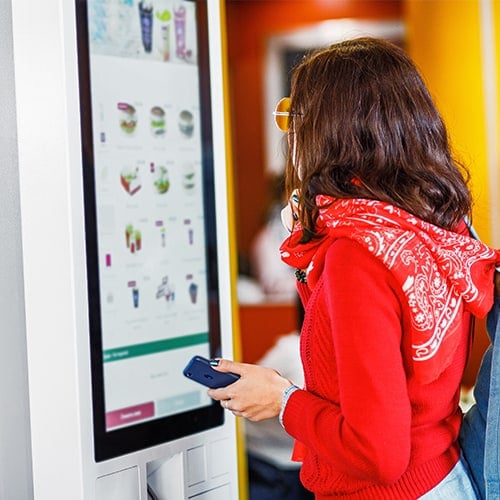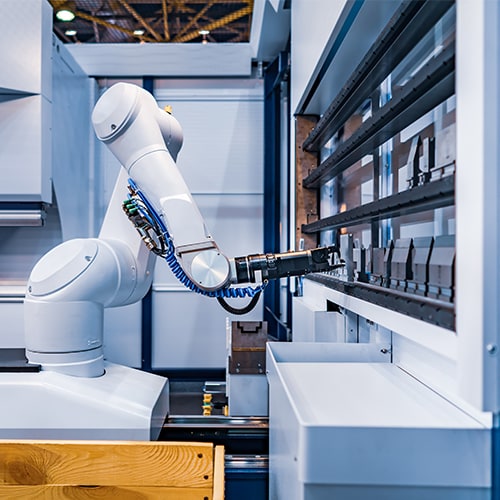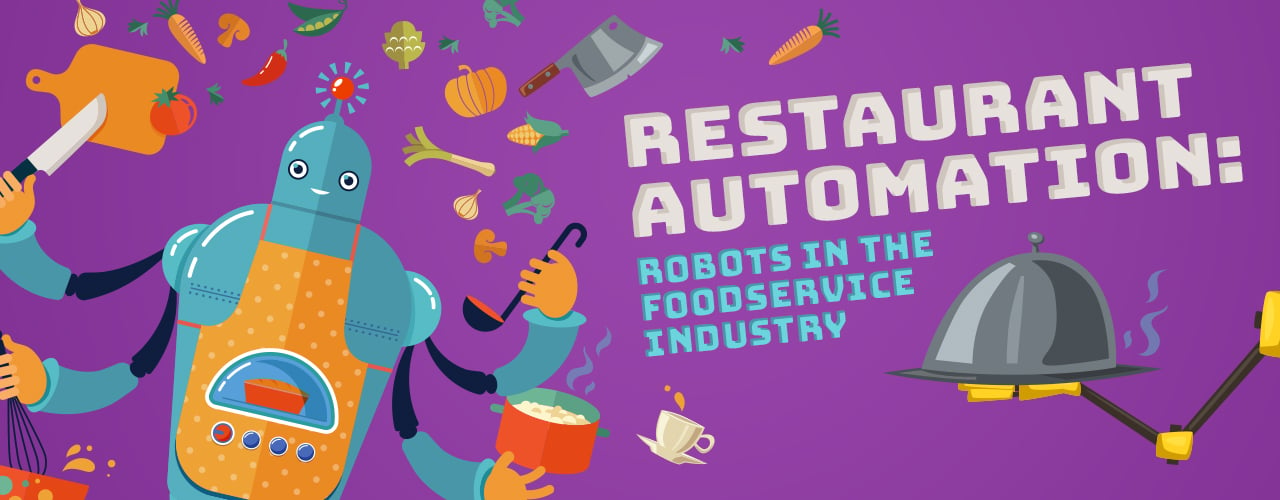Restaurant Automation: Robots in the Foodservice Industry
Last updated on Jul 24, 2024Jason KurtzIn recent years, technological innovations have dramatically changed the landscape of the foodservice industry. Automated machines, robots, and devices have opened up endless possibilities that previously seemed like they belonged in the distant future. Because of this, many companies are investing time and money into developing new technologies to push themselves further. In this blog, we’ll investigate how new automation trends are affecting the restaurant industry, how these new technologies are being implemented, and the benefits that robots can bring to your establishment.
What Is Restaurant Automation?
Restaurant automation is the use of automated or robotic devices to complete tasks throughout a restaurant. These robots can serve a variety of purposes in your workplace, doing anything from preparing meals to delivering food to your guests. It’s important to note that while these robots represent the forefront of restaurant innovation, there are still limitations to what they can do. For example, a device can be programmed to cook a specific recipe, but cannot replace your chef and prepare everything on your menu.
Robots Working in Restaurants
While full automation in restaurants may seem like a distant goal, many businesses have already implemented automated technology throughout their workplace. Some popular examples of restaurant automation include:
- Little Caesar’s pizza-making robots
- McDonald’s experimenting with an automated drive-thru
- White Castle and CaliBurger embracing Flippy, the burger-flipping robot
- Starbucks AI-enabled coffee machines
How Can Automation Improve Restaurant Operations?
Robots working in restaurants have the potential to significantly improve restaurant operations. Their effects aren’t limited to one particular part of a restaurant and can help to improve all aspects of the business. In the next section, we’ll investigate three distinct areas where robots are helping to improve and optimize restaurants, as well as push them forward.
Automated Delivery

Delivery has grown in popularity in recent years, particularly due to the proliferation of ghost restaurants and third-party deliver services. Advances in technology surrounding driverless cars, drone delivery, and several other technologies have opened the pathway to many opportunities for restaurants to update their delivery systems. By embracing these innovations, businesses can reduce delivery times and increase their output. Below, we’ve listed some of the most common forms of robot food delivery:
- Domino’s self-driving delivery: Recently, Domino’s partnered with a robotics company to develop an autonomous pizza delivery system. The result is an automated vehicle that travels from the store to the delivery destination, keeping their customer’s food hot on the way.
- Starship Technologies: The food delivery robots from Starship Technologies are designed with an insulated interior to keep food at a safe temperature. Furthermore, they are outfitted with GPS and cameras to help navigate streets and sidewalks. Once it arrives at a customer’s door, it can be unlocked with an app and the customer can retrieve their food.
- DoorDash delivery robots: The third-party delivery service DoorDash recently announced plans to develop its own form of automated delivery. The compact vehicle would only be able to carry a limited amount of food, but it can be programmed to travel between different businesses and make deliveries.
Automation in Front-of-House Areas

In general, automation in front-of-house areas has to do with simplifying the ordering and checkout process. In recent years, several new technologies have emerged which allow customers to order, pay, and request service on their own. Some of the most recognizable forms of this include:
- Self-service kiosks: Several large chains, like McDonald's, Panera Bread, and Shake Shack, have already implemented self-service kiosks in their lobbies. These allow guests to input their order through a touch-screen interface, pay, and print a receipt. Once their order is complete, their number will be called and they can pick up their food.
- Tabletop devices: Most prominent sit-down restaurants across the country have added some form of device to the tables in their restaurant. These devices make it easier for groups to pay, request service, and even play games to pass time. Furthermore, some of these kiosks allow larger groups to split up their bills, reducing the burden on your servers.
- Running and bussing robots: In place of traditional runners and bussers, running and bussing robots are programmed to bring food to your customers, serve drinks, and even assist your employees with cleanup.
Restaurant Kitchen Automation

Most kitchen robots excel at completing simple, repetitive tasks. If utilized correctly, they can help to reduce the amount of time-consuming and low-skill tasks in your workplace, allowing you to optimize your staff and reduce human error. Some common tasks that robots can complete in your kitchen include:
- Flipping burgers
- Mixing spices
- Prepping foods
- Operating fryers
- Keeping ingredient portions uniform
It’s important to note that although these technologies can save you time, they may not be able to troubleshoot or solve errors on their own. Additionally, robots may not pick up on certain traits that a human can. For example, a robot may not be able to identify blemishes on foods, or discoloration in fruits or vegetables. For that reason, it’s important to make sure you have a team of employees that can oversee and manage your automated devices.
How Does Restaurant Automation Reduce Labor Costs?
A significant factor affecting the popularity of restaurant automation is rising labor costs, and by extension the rising cost of maintaining a restaurant in general. While the price of automation may be expensive at first, its price will drop as the technology progresses and becomes more common in the foodservice industry. In fact, a recent study found that costs have fallen 40% since 2005. Beyond their ability to complete tasks without being paid, robots offer several other benefits that can help reduce your expenses. These benefits include:
- Improved training: The restaurant industry features a high rate of employee turnover, meaning that the time invested in training new hires can quickly go to waste if they choose to leave their job. By utilizing automated training protocols and videos, managers can reduce the amount of time they spend on training and complete other tasks instead. As a result, the cost of training is reduced.
- Automated task management: By automating simple tasks throughout the workplace, employees will have more time and flexibility to take on other responsibilities. Additionally, automation makes it easy to display the tasks that your employees are working on and highlight things that need to get done. This can result in improved task management, making your business more cost-efficient.
- Efficient inventory management: One of the leading contributors to increased spending in a restaurant is poor inventory management. Automated inventory systems make it easy for your employees to scan and track items and ingredients in your kitchen, saving them time and helping you to reduce waste.
Restaurant automation has changed the foodservice industry for the better. Money is being saved, tasks are being streamlined, and new jobs are being introduced. By embracing automation and investing in robots for your restaurant, you’ll be able to position yourself for success both now and in the future.



